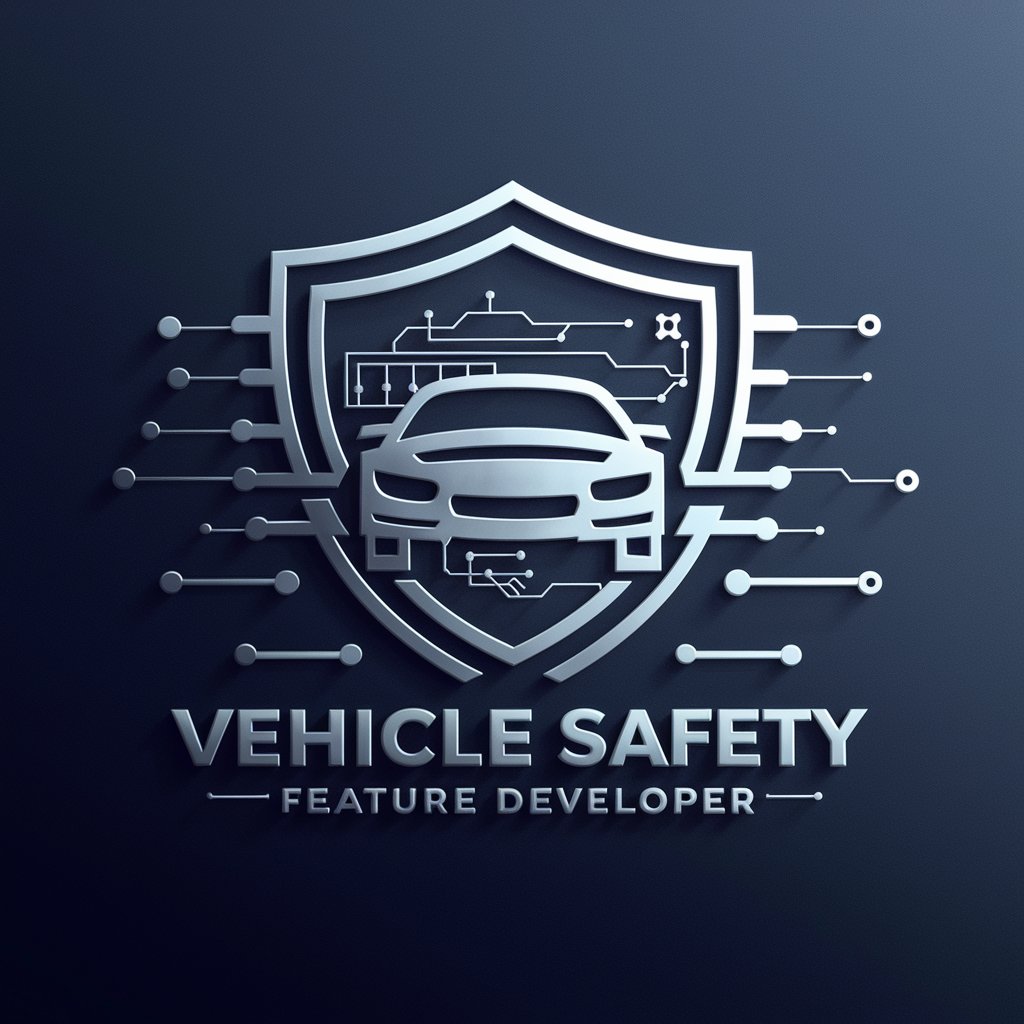Vehicle Safety Feature Developer - Advanced Safety Testing

Welcome to the Vehicle Safety Feature Developer platform!
Empowering safer driving with AI
Analyze the effectiveness of...
Develop a new safety feature that...
Assess the impact of current safety standards on...
Explore innovative technologies for...
Get Embed Code
Overview of Vehicle Safety Feature Developer
Vehicle Safety Feature Developer is designed as a specialized assistant to innovate and refine safety features in vehicles, using simulations, data analysis, and comprehensive safety standards knowledge. This tool supports the development and testing of new safety technologies, ensuring they meet rigorous safety standards and contribute effectively to accident prevention and passenger protection. Examples include the development of advanced driver-assistance systems (ADAS), such as automatic emergency braking, and passive safety features like enhanced crumple zones. By simulating various collision scenarios, the tool can analyze the effectiveness of safety features under different conditions, suggest design improvements, and predict real-world performance. This ensures that new safety technologies not only comply with existing regulations but also set new benchmarks for vehicle safety. Powered by ChatGPT-4o。

Core Functions and Applications
Simulation and Modeling
Example
Evaluating the performance of airbag deployment algorithms in various crash scenarios.
Scenario
Using physics-based models to simulate frontal, side, and rear-end collisions at different speeds and angles, to assess how effectively an airbag deployment algorithm protects occupants.
Data Analysis and Optimization
Example
Optimizing the material composition of vehicle body panels for enhanced crashworthiness.
Scenario
Analyzing crash test data to identify the optimal balance of materials that provide sufficient strength and crumple characteristics, reducing occupant injury risk in a collision.
Safety Standards Compliance
Example
Ensuring that a new vehicle model meets global safety standards.
Scenario
Reviewing the vehicle's design and safety features against international safety standards (e.g., Euro NCAP, NHTSA) to identify any areas of non-compliance and suggest necessary modifications.
Target User Groups
Automotive Manufacturers
Vehicle manufacturers can use these services to design and test new safety features, ensuring their models exceed safety standard requirements and offer competitive safety innovations in the market.
Automotive Safety Engineers
Safety engineers involved in the development of new vehicle models or updates to existing models benefit from precise simulations and data analysis capabilities, enabling them to refine safety features more effectively.
Regulatory Bodies
Organizations responsible for setting and enforcing vehicle safety standards can utilize these services to evaluate the effectiveness of current regulations and explore potential updates based on the latest safety technologies and data insights.

How to Use Vehicle Safety Feature Developer
Start Free Trial
Access a free trial without needing to log in or subscribe at yeschat.ai.
Identify Objectives
Determine the specific safety features or scenarios you want to evaluate using the tool.
Gather Data
Prepare relevant vehicle dynamics data, safety standards information, and any previous test results to input into the system.
Run Simulations
Utilize the tool's simulation features to assess the impact and effectiveness of various safety features under different conditions.
Analyze Results
Review the output from the simulations to make informed decisions about improvements and implementations of safety features.
Try other advanced and practical GPTs
Feature Article Pro
Elevate Your Writing with AI Creativity

Feature Prioritization Mentor
Prioritize smarter with AI-driven insights

MBE Bar Exam Tutor
AI-Powered MBE Success Path

Bar Exam Navigator
Navigating Bar Exam Prep, Powered by AI

Bar Bud™
Craft cocktails with AI-powered expertise

Pundiddlyumptious Bar
Unleash puns through AI imagery!

Feature Scribe
Automate Your Jira Tickets with AI

Freemius Premium Feature Assistant
Unlock premium features with AI

Reforge Feature Map
Mapping Your Features for Success

Feature Finder
Transforming Complex Information into Clear Insights

Ore Feature Specialist
Craft your world, mine your rules.

Feature Copilot
Empower Your Microsoft 365 with AI

FAQs About Vehicle Safety Feature Developer
What types of safety features can I test with this tool?
The tool is designed to test a range of vehicle safety features, including passive safety systems like airbags and seatbelts, as well as active systems such as anti-lock braking systems (ABS) and electronic stability control (ESC).
How accurate are the simulation results?
Simulation accuracy is high, thanks to the tool's use of advanced algorithms and up-to-date vehicle dynamics models. However, the precision of results also depends on the quality and detail of the data input.
Can this tool help in complying with safety regulations?
Yes, it can assist manufacturers and designers in ensuring that new vehicle designs and features comply with international safety standards and regulations.
Is there support for real-time data analysis?
The tool supports real-time data input and analysis, allowing users to see how changes in design or operation can affect vehicle safety in real time.
What makes this tool unique from other safety testing software?
Its integration of AI for predictive analysis, user-friendly interface, and the ability to simulate a wide variety of real-world scenarios set it apart from conventional testing software.
